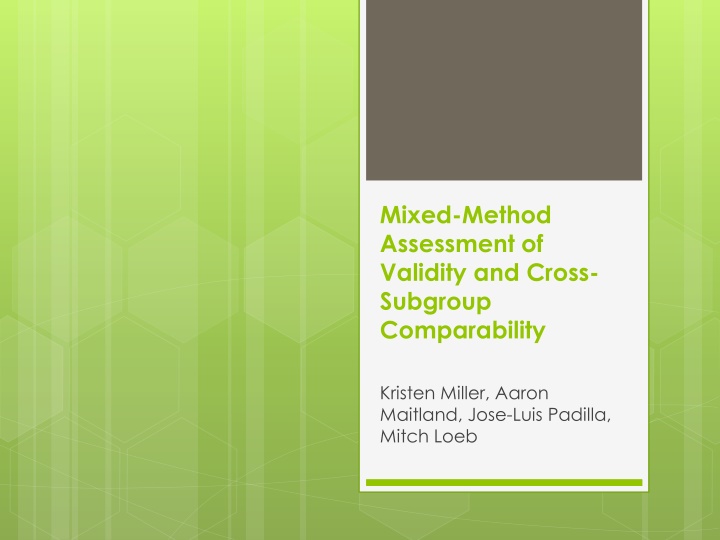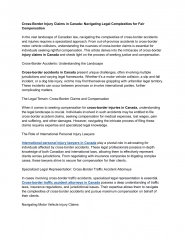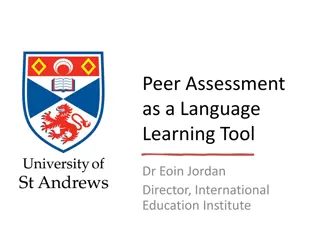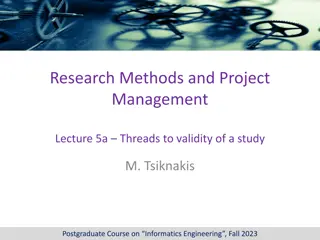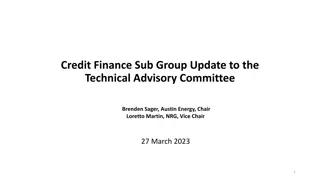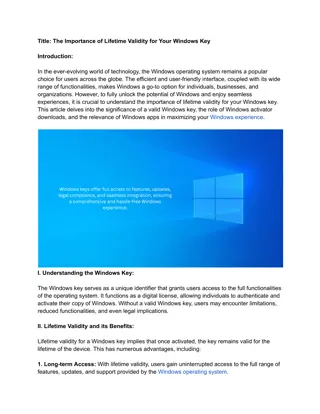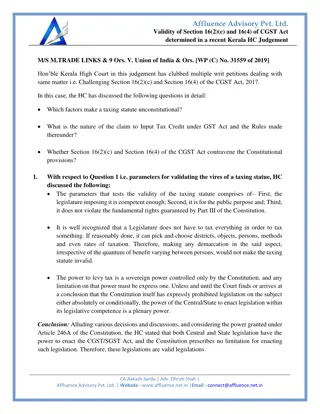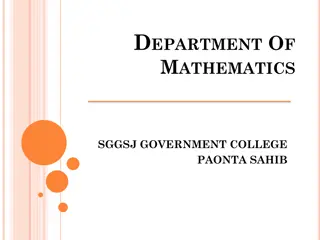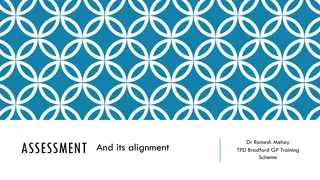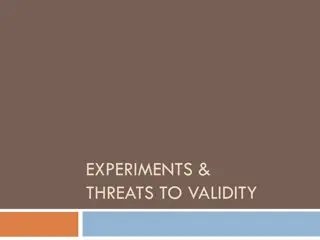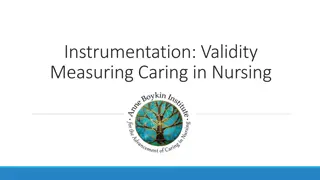Cross-Subgroup Validity Assessment
This study examines the validity and comparability of pain assessment methods using a mixed-method approach. Results provide insights into pain frequency, intensity, and descriptive patterns among respondents.
Download Presentation

Please find below an Image/Link to download the presentation.
The content on the website is provided AS IS for your information and personal use only. It may not be sold, licensed, or shared on other websites without obtaining consent from the author.If you encounter any issues during the download, it is possible that the publisher has removed the file from their server.
You are allowed to download the files provided on this website for personal or commercial use, subject to the condition that they are used lawfully. All files are the property of their respective owners.
The content on the website is provided AS IS for your information and personal use only. It may not be sold, licensed, or shared on other websites without obtaining consent from the author.
E N D
Presentation Transcript
Mixed-Method Assessment of Validity and Cross- Subgroup Comparability Kristen Miller, Aaron Maitland, Jose-Luis Padilla, Mitch Loeb
Pain Questions In the past 3 months, how often did you have pain? Would you say never, some days, most days or every day? [If at least some days] Thinking about the last time you had pain, how much pain did you have? Would you say a little, a lot, or somewhere in between?
Descriptive Follow-up Questions Please tell me which of the following statements, if any, describe your pain. It is constantly present. Sometimes I m in a lot of pain and sometimes it s not so bad. Sometimes it is unbearable and excruciating. When I get my mind on other things, I am not aware of the pain. Medication can take my pain away completely. My pain is because of work. My pain is because of exercise.
Field Interviews 2010 National Health Interview Survey Subset: of HIS; N=6775 Interviewer administered
Results: Frequency Unweighted N 2631 2289 486 709 660 6775 Weighted Percent 38.5% 34.9 6.8 10.4 9.6 100 Never Some days Most days Every day Missing Total Intensity Unweighted N 1691 275 564 260 673 76 3539 Weighted Percent 47.3% 8.3 16.8 8.2 17.7 1.8 100 A little Closer to a little Exactly in the middle Closer to a lot A lot Missing Total
Frequency Intensity Some days Most days Every day 41.7% (n=1442) 3.8% (n=133) 3.2% (n=112) A little 5.8% (n=199) 1.2% (n=40) 1.0% (n=36) Closer to a little 8.8% (n=303) 3.4% (n=118) 4.1% (n=143) Exactly in the middle Closer to a lot 3.2% (n=109) 1.6% (n=55) 2.8% (n=96) 6.4% (n=220) 4.0% (n=139) 9.1% (n=314) A lot
Descriptive Follow-Up Variables Percent of Respondents Describing Pain Constantly present 31.1 Fluctuating 55.6 Unbearable 25.1 Not always aware 48.3 Medication alleviates 43.4
Problem if: Constant or unbearable Frequency Some days (False Negative) Most days Every day Intensity A little 41.7% (n=1442) 3.8% (n=133) 3.2% (n=112) Closer to a little 5.8% (n=199) 1.2% (n=40) 1.0% (n=36) Exactly in the middle 8.8% (n=303) 3.4% (n=118) 4.1% (n=143) Closer to a lot 3.2% (n=109) Problem if: Medicine takes away or sometimes not aware (False Positive) 1.6% (n=55) 2.8% (n=96) A lot 6.4% (n=220) 4.0% (n=139) 9.1% (n=314)
Percent of problem cases Consistent 92.41 False Negative 2.83 False Positive 4.77
Demographic analysis of problem cases Age Young Not Young Older Even Older Oldest Consistent 93.7 93.5 92.8 92.3 90.7 False Negative 4.6 2.2 2.8 2.4 2.2 False Positive 1.6 4.3 4.4 5.3 7.8
Demographic analysis of problem cases Education Least Educated In-Between Educated Most Educated Consistent 88.2 90.7 94.2 False Negative 4.3 3.3 2.3 False Positive 7.6 6.0 3.5
Demographic analysis of problem cases Income Poor Less Poor Less Wealthy Wealthiest Consistent 89.5 93.3 94.2 95.0 False Negative 3.0 3.4 3.5 1.3 False Positive 7.6 3.4 2.3 3.8
